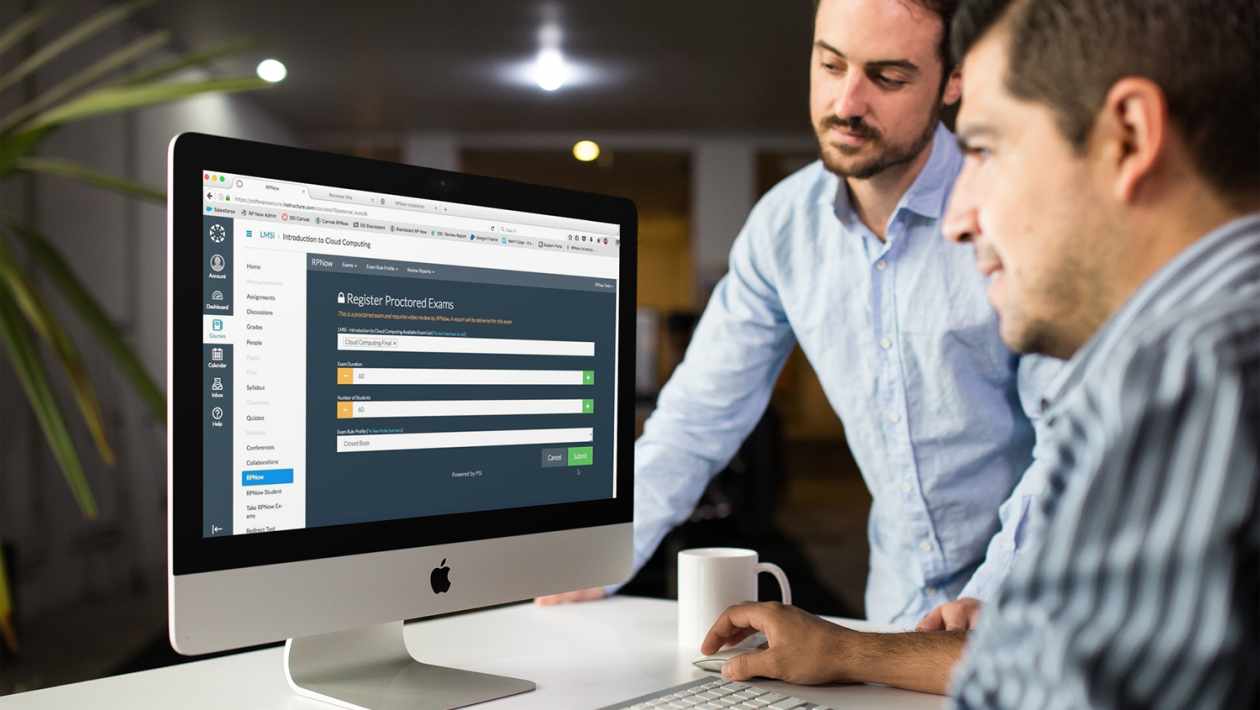During an offline assessment, the exam hall is enveloped with silence. Only the noise of scraping of a pen or a pencil on answer sheets is audible. With hawk-like visions (most are suspected to have those all-seeing sights at the rear of their heads as well) she maintains everyone under her purview, flushing out the doubtful characters at the foremost glance. Examiners, or invigilators, as they are called, are an irreplaceable feature of our traditional competitive examinations during an offline assessment, crucial to maintaining integrity. Or are they?
As with most things conventional, proctoring, too, is undergoing significant modification appreciations to technical improvements. With online proctoring services and tools continuously evolving mainstream, more and more academic organizations and firms are adopting proctoring services as opposed to the more standard form of conducting examinations thanks to its multiple benefits. Some of the early adopters of online proctoring tools for their recruitment requirements include organizations such as Amazon, Walmart Labs, Cognizant, and Honeywell, among several giant and not-so-big players.
Table of Contents
How does an online proctored examination work?
Online invigilation, equivalent to offline proctoring (or just your typical proctoring), is a service that protects the integrity of the examination launched by remotely observing (via a webcam) the movements of the candidate during an assessment test.
The candidates appearing for the online proctored assessment tests are supposed to download the software application onto their preferred device (laptop or desktop) that will be used for the objective. When the candidate starts the test, the application considers his/her device to be connected to a webcam, and a lockdown mechanism is used to prevent him/her from opening any web browsers or a search engine. The candidate has to verify his/her individuality by one of the numerous forms that are required by the application.
While rare may need the candidate to show evidence of identity to the camera, some others use facial recognition and detection software embedded with tools to verify the candidate’s identity. Certain others use developed technology to additionally ensure the candidate’s identity by training him/her to type a certain phrase and then examining the keystrokes with earlier introduced samples. Whatever the process used, after verifying the candidate’s identity, the application needs the candidate to show around the space where the test carrier’s placed to ensure there is no one else to help the candidate during an assessment test.
Once the exam starts, there are three methods in which online proctoring services can take place: Live online proctoring, Recorded proctoring, and Advanced automated proctoring according to this guide and knowledge.
- Live online proctoring:
In this way of invigilation, a qualified monitor monitors the candidate as he/she is giving the assessment test through live audio and video spreads. These monitors are instructed to confirm the authenticity of the candidate and look for any red banners such as suspicious eyes or facial gestures or the formation of any unverified gadget that could indicate possible cheating. In case unfair means do arise, the monitor can either shut down the examination or notify the organization of the activity.
This arrangement of proctoring permits the invigilators to supervise up to 32 (a typical number for most representatives) candidates at a time. Both the candidate and invigilators can be in any place as long as they both have access to high-speed internet connectivity. However, the only drawback of this kind of proctoring is that it is dependent on the availability of the proctor on a given date and time. It is also costly since it requires human intervention just like offline invigilators and for the same reason is not scalable either.
- Recorded proctoring:
Unlike live online invigilation, recorded monitoring, as its name indicates, merely records the activities of the candidate during the assessment test, which is then played back by an invigilator at a greater speed to look for any doubtful behavior or event during the assessment test. This form of proctoring has a benefit in that it needs no scheduling since the candidate can take the exam at any time suitable to him/her. But as this too needs human intervention for checking the clip, it is costly and difficult to scale.
- Advanced automated proctoring:
This is the most evolved form of proctoring (as the name indicates) and needs no manual human intervention whatsoever. This form of invigilation records and stores the activities of the candidate while also proctoring the feed for red flags or warnings of any sort that would indicate unfair means using advanced audio and video analytics. It is the least expensive or one of the cheapest means of all these forms of proctoring since it eradicates the necessity for manual intervention and is scalable for the same cause.
Why should organizations opt for online proctoring examinations?
With remote examinations evolving into a norm, organizations can assess and recruit talent irrespective of geographical restrictions. However, unless these online examinations are invigilated by a reliable proctor, there is no guarantee that the candidate who pulls off a brilliant performance during the examination is the same one who is hired! Hence, it is essential to confirm the authenticity of the candidate who undertakes the examination, and that is where digital proctoring services come into play. With its numerous severe safety measures in place, this software confirms that the integrity of the examination process is conserved.
What does the future handle?
While we are absolutely in the dark when it comes to what the future might evolve, we can be fairly certain that online examination tests are going to be necessary for recruitment. Moreover, the demand for online invigilation is increasing day by day. With its dedicated security features such as facial recognition, keyboard, and facial motion analysis, online proctoring goes an extended way in maintaining the integrity of the assessment test conducted. But these answers require such laboriously elaborate set-ups that even the multiple set ‘cheater’ would be prevented from taking it up. And since its pros far overpower its cons, it wouldn’t be too long before online proctoring is interchangeable with online recruitment.





